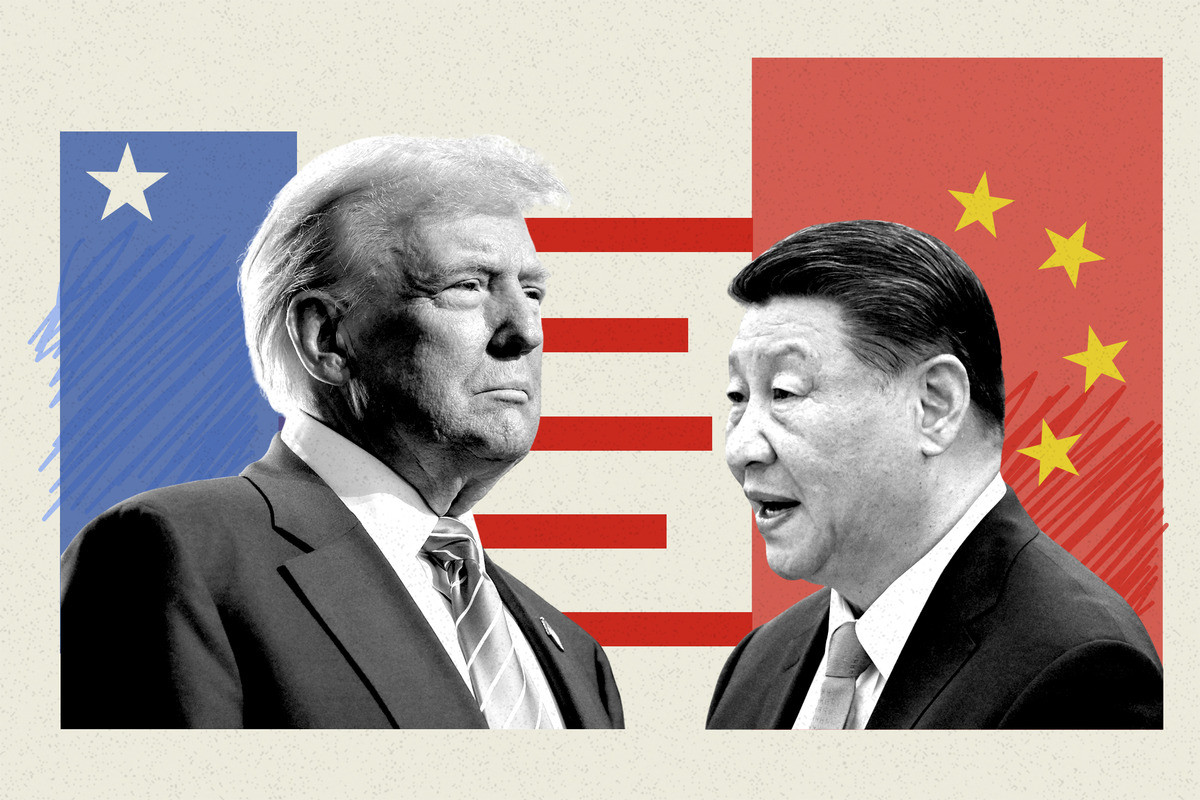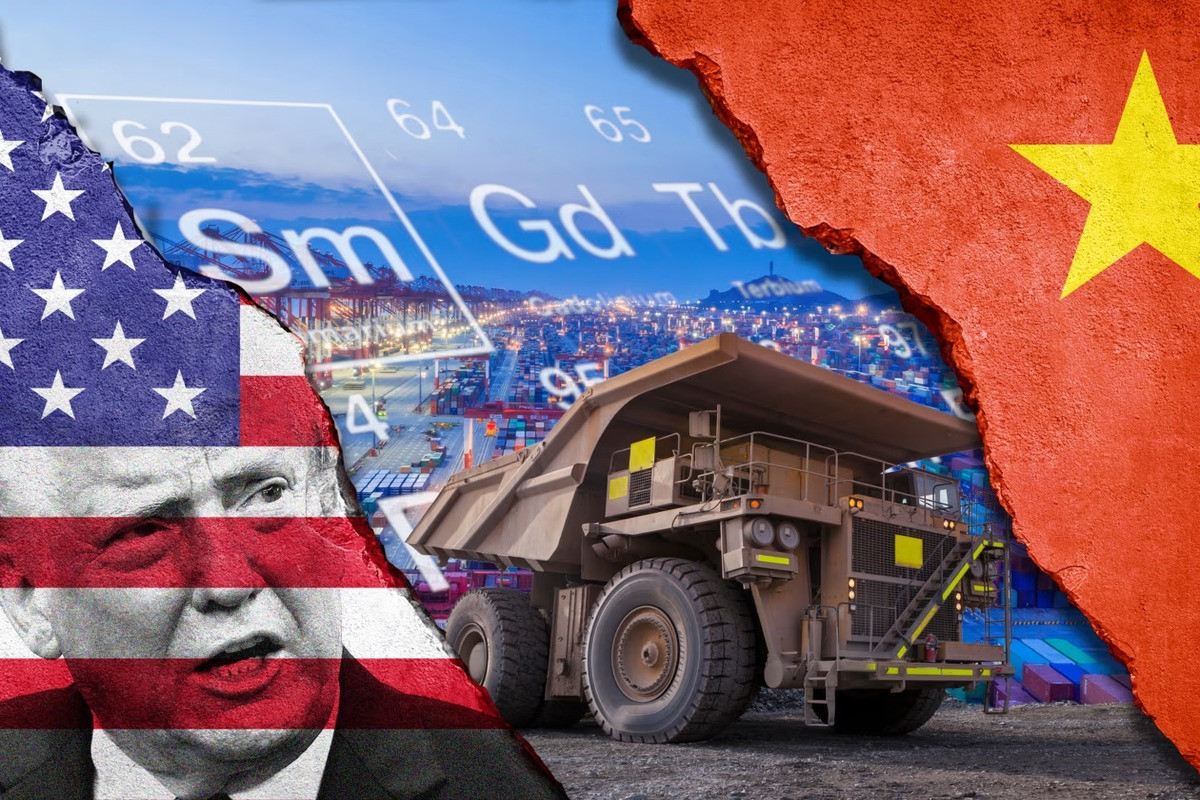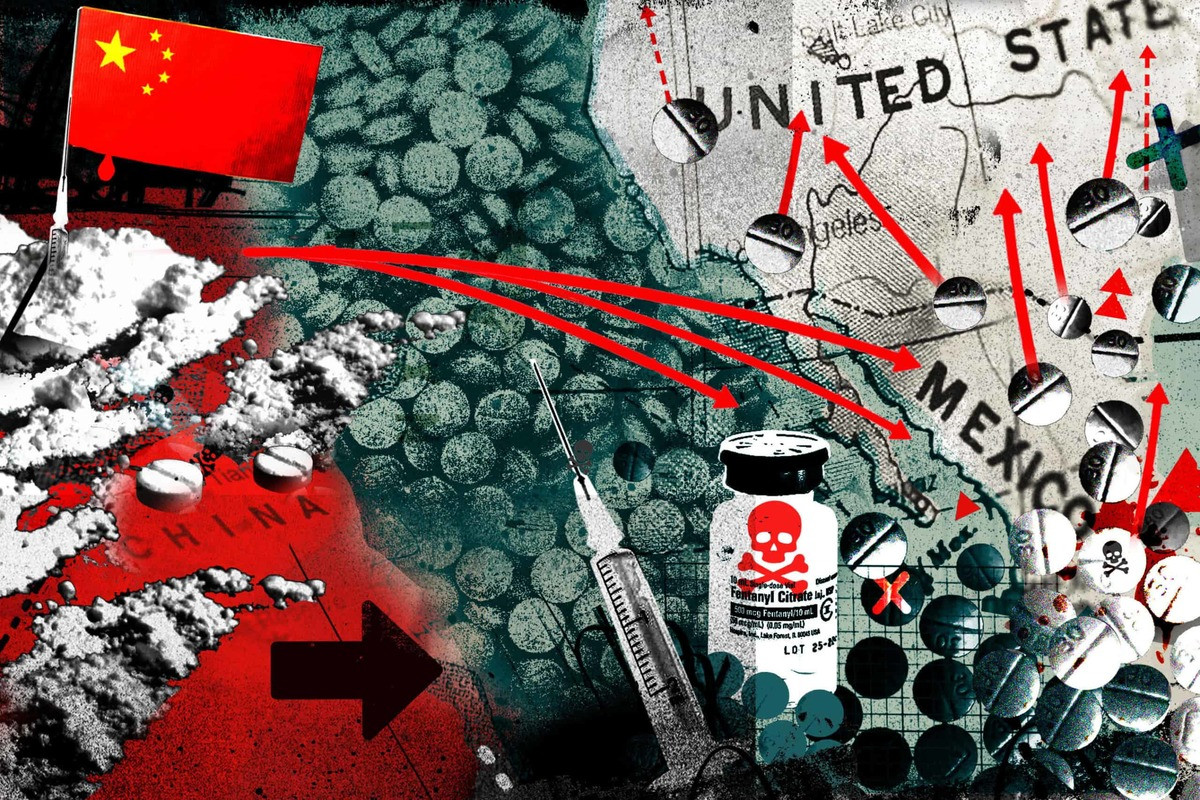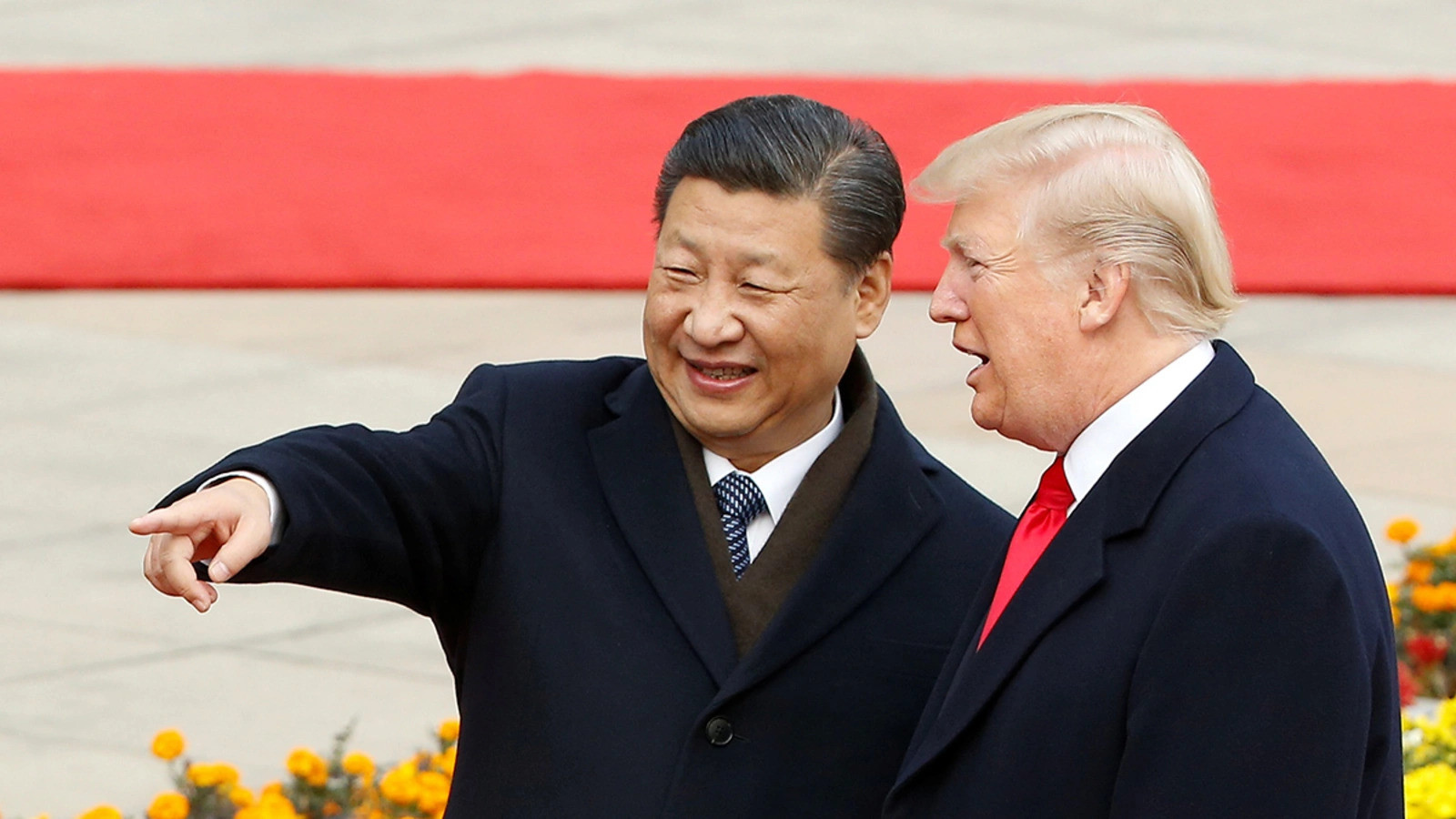
Global markets are holding their breath: this week, the United States and China are returning to the negotiation table for the first time in many months of a tense trade truce set to expire on November 10. Ahead of this meeting, Donald Trump, clearly intent on dictating the agenda, has outlined his key demands to Beijing. What lies behind this show of hardness – strategy, pressure, or playing to the gallery? Let's examine.
Rare earths dilemma: Trump's pre-talks pressure on Beijing
Over the weekend, returning from Florida aboard Air Force One, the US President stated that he would not allow China to "play rare earth games," hinting at the strategic dependence of American industry on supplies of these critical metals. His words sounded both as a warning and a signal of the start of a new round of pressure.
Recall that a few days earlier, Trump threatened to impose 100% tariffs on Chinese supplies after Beijing promised to establish broad control over mineral resources.
These steps, if implemented, could effectively freeze the trade truce, which expires on November 10. The scenario, in which both sides find themselves on the brink of economic confrontation again, has become reality faster than even the most pessimistic analysts expected.

Beijing, however, has not remained passive. Chinese authorities have tried to ease the concerns of global partners by assuring that the tightening of export controls will not harm normal trade flows.
Last week, on the sidelines of the International Monetary Fund meetings, delegates from China tried to convince colleagues that this was not about sanctions but about "creating a long-term regulatory mechanism." However, this explanation did little to reassure markets.
In essence, both sides have approached a situation that analyst Kyle Rodda aptly described in Cold War terms: "There's an element — to use the Cold War language — of mutually assured destruction when it comes to total rare earth export curbs and 100% tariff rates, with both the U.S. and Chinese more or less acknowledging that."
Rodda added that markets are still counting on de-escalation but "are likely to remain jittery until such backdowns are explicitly announced."
This nervousness is quite understandable: rare earth elements are not just raw materials but the foundation of entire industries, from the production of fighter jets and smartphones to electric vehicles and even car seats.
For Trump, this is not just an economic but also a political tool. The threat of tariffs allows him to pressure Beijing while simultaneously showing domestic voters that Washington is ready to defend national interests. However, as the practice of recent years shows, Trump's trade toughness comes at a price – primarily for global markets, where any of his statements is instantly reflected in the dynamics of currencies, stocks, and commodity prices.
Fentanyl and soybeans: toxic cocktail in US-China agenda
If rare earth metals represent a strategic issue for Washington, then fentanyl and soybeans have become symbols of the domestic and foreign policy pressure that Donald Trump seeks to convert into diplomatic results.
Ahead of the upcoming talks in Malaysia, the president identified them as two of the three main points on which, in his view, China "must finally deliver on its commitments."
The fentanyl problem is painful and politically charged. In the US, this synthetic opioid has long become one of the leading causes of overdose deaths, embodying the national opioid crisis.

Trump again accused China of failing to restrict the export of fentanyl and its chemical precursors, which, according to Washington, exacerbates the situation in American cities. The US wants China "to stop with the fentanyl," Trump stated, adding that Beijing should demonstrate "real responsibility."
Earlier this year, the US imposed 20% tariffs on Chinese goods, citing the illegal influx of fentanyl. In response, Beijing tightened control over two chemicals that can be used to manufacture the drug but emphasized that the problem cannot be solved without the participation of the American side.
Chinese rhetoric suggests the crisis's root lies in demand, not supply, and that Trump's accusations are merely part of a political game. Nevertheless, for the American leader, it is a convenient pressure tool, allowing him to speak about combating drugs and US "toughness" in a single sentence.
The issue of soybeans remains equally sensitive – Trump's third demand to Beijing. To an outside observer, this might seem like a minor detail, but in reality, it involves billions of dollars and domestic political support.
China, which purchased about $12.6 billion worth of US soybeans last year, has not bought a single shipment this year. Instead, Beijing switched to supplies from South America, leaving American farmers with growing inventories and falling prices.
This situation is particularly sensitive for the US agricultural sector. Midwestern farmers are increasingly vocal in their dissatisfaction: many await financial aid from the government, which reportedly is delayed, while warehouses full of unsold soybeans are gradually becoming a symbol of the prolonged trade confrontation. Product prices are declining, export contracts are shrinking, and the sector, until recently considered stable, is facing growing pressure from all sides.
Unsurprisingly, the US president called on China to quadruple its soybean purchases, and when that did not happen, threatened to ban vegetable oil imports from China, accusing the Chinese government of deliberately creating difficulties for American soybean farmers.
Thus, fentanyl and soybeans are not just items on a trade agenda but political symbols. The first is a domestic marker of resolve to combat a crisis; the second is an indicator of how far Trump is willing to go to maintain support from his agricultural electorate. Although both topics may seem distant from macroeconomic models, in reality, they provide the emotional and political sharpness to the negotiations that numbers and tariffs lack.
On brink of collapse: truce expires, stakes rise
With just days remaining until the US-China trade truce expires on November 10, the agreement, already hanging by a thread, faces its ultimate test. Over these months, markets had grown accustomed to a fragile calm, but recent moves by both sides have again brought the situation to the brink of breakdown.
Following Trump's threats to impose 100% tariffs and Beijing's announcement of controls on rare earth metal exports, the balance of power has shifted. Washington, for its part, has expanded technical restrictions and even proposed levying taxes on Chinese ships calling at US ports.
China responded by tightening export controls and signaling possible restrictions on shipments of critically important materials. What recently appeared to be a temporary pause increasingly resembles the maneuvering of chess pieces ahead of a new confrontation.
Against this backdrop, the upcoming talks in Malaysia appear as an attempt to steer the process back toward constructive engagement. US Treasury Secretary Scott Bessent confirmed that the meeting will take place later this week, noting that a recent virtual discussion with Chinese Vice Premier He Lifeng had been a "constructive exchange of views."

Chinese state media also described the dialogue as "positive and pragmatic," but experts are in no hurry to draw optimistic conclusions. After all, too many factors suggest that both sides are still merely testing each other's willingness to offer concessions.
Particular attention is focused on the potential meeting between Trump and Xi Jinping, which could take place as early as the end of the month in South Korea, on the sidelines of the Asia-Pacific Economic Cooperation summit.
For both leaders, this would be their first face-to-face meeting since Trump's return to the White House, and much depends on it—namely, whether the current trade truce can be extended.
The American president, commenting on the upcoming dialogue, expressed himself in typically familiar terms: "I have a good relationship with President Xi. I think we're going to be fine with China, but we have to have a fair deal."
Beneath the calm tone lies Trump's usual strategy: maximum pressure as a means to seize the initiative.
For China, the stakes are no less significant. Beijing is seeking to show that it can operate from a position of strength without succumbing to threats, while also avoiding direct confrontation that could harm its domestic economy and foreign investment climate.
As a result, both sides are negotiating under conditions of "mutual risk," where concessions may be perceived as weakness and firmness as a provocation. Markets, however, are already responding to this duality.
"As a result, the markets are pricing in that things will de-escalate," analyst Kyle Rodda said. "However, the markets are likely to remain jittery until such backdowns are explicitly announced."
This nervousness is being reflected on commodity exchanges and in currency quotes. Investors, now well-acquainted with the turbulence of the Trump era, increasingly admit that the current round of negotiations is one of the most unpredictable in recent years.
Thus, the truce, once envisioned as a tool for stabilization, has become yet another source of tension. The upcoming meeting in Malaysia is more than just another round of dialogue. It is an attempt to halt the momentum of a conflict that has kept the global economy in a state of anxious uncertainty for far too long.





















